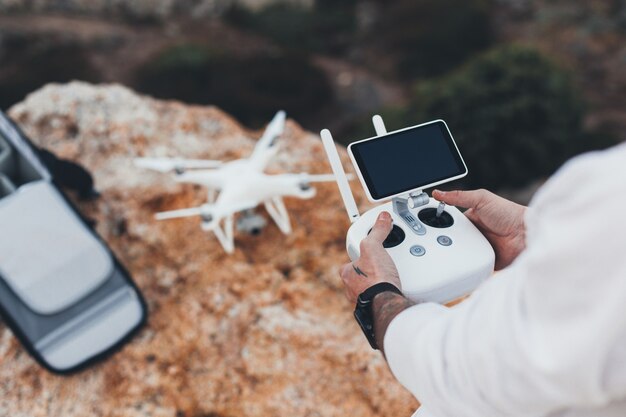
Sponsored article
In an era where airspace security is of paramount concern, autonomous drones emerge as a compelling solution against modern threats. Their ability to autonomously patrol, identify potential hazards, and provide real-time data has transformed how we secure our skies. As the boundary between manned and unmanned systems blurs, understanding the integration of these technologies becomes crucial for maintaining a safe and secure airspace environment.
The integration of autonomous drones into airspace security provides a transformative leap in surveillance and threat detection capabilities. Utilizing UAV technology, these drones offer unparalleled precision and coverage in monitoring airspace for potential threats. Their advanced systems enable real-time data gathering, giving security forces instant access to crucial information needed to safeguard environments from aerial intrusions. Autonomous drones enhance airspace security by acting as vigilant sentinels, capable of identifying and tracking unauthorized UAVs or suspicious activities with remarkable accuracy.
Furthermore, the deployment of advanced kamikaze drones for airspace defense arms security protocols with a potent tool designed to neutralize threats effectively. These specialized UAVs are adept at intercepting and dismantling targets even under challenging conditions, making them indispensable in the protection against contemporary aerial threats. By leveraging the cutting-edge capabilities of autonomous drones, airspace security measures are significantly amplified, ensuring robust defense mechanisms are in place to counter modern adversities. Advanced kamikaze drones for airspace defense are a testament to the evolving landscape of security technologies.
In today’s rapidly evolving technological landscape, airspace security faces increasingly sophisticated modern aerial threats. With the ubiquitous availability of drones, the potential for their misuse has grown exponentially. Rogue drones pose significant risks by entering restricted zones, interfering with air traffic operations, and potentially carrying out malicious activities. These unauthorized activities illustrate the urgent need for enhanced surveillance systems and innovative countermeasures. In addition to physical intrusions, the cybersecurity aspect of airspace protection cannot be overlooked. The digital dimensions of these threats open up vulnerabilities that could be exploited by cybercriminals aiming to manipulate navigation systems or communication networks.
The complexities of maintaining secure airspace are manifold, requiring a multi-faceted approach. Some of the key airspace challenges include:
In the realm of airspace security, the drone advantages over traditional methods are becoming increasingly evident. Autonomous drones offer unparalleled cost-effectiveness, eliminating the need for large manpower and extensive equipment typically required with conventional approaches. Their ability to operate continuously without fatigue ensures consistent surveillance and monitoring, reducing operational costs over time. In addition, the rapid response capabilities of drones in detecting and addressing threats transform the efficiency of security protocols. Unlike traditional methods that might involve delays due to human factors or logistical constraints, drones can be instantly deployed to the exact location of a potential threat, significantly shortening response times and enhancing overall security.
Moreover, the precision inherent in drone technology surpasses that of traditional security strategies, which often rely on stationary systems or manned patrols that can miss threats due to limited coverage or human error. Advanced sensors and AI-driven analytics enable drones to identify and track potential threats with remarkable accuracy, ensuring that any suspicious activity is promptly and effectively addressed. By integrating such technology, airspace security agencies can redefine their strategies, maintaining a vigilant defense against modern threats. As a result, drones not only supplement but also revolutionize existing security frameworks, offering a futuristic vision of air safeguarding.